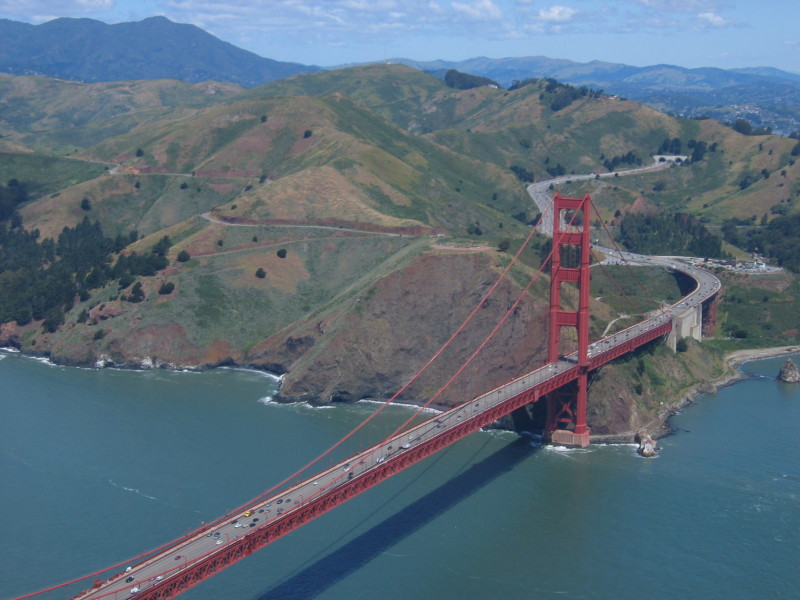“I can’t believe that any body would not go through the necessary research to see what the numbers show, and then make a decision about whether at that point it’s appropriate to charge a fee or not charge a fee,” said Director Brian Sobel.
A motion by director Dave Snyder, who heads the California Bicycle Coalition, to kill studying the idea failed on a narrow vote of 10-9.
Bridge district officials say it will take a few years to complete the study, and the earliest a fee could come up for consideration is 2017.
Original post (Thursday, Oct. 23):
The Golden Gate Bridge, Highway and Transportation District's Board of Directors will vote on its 2014 Strategic Financial Plan on Friday. The plan outlines 45 actions that could help the district eliminate a $33 million deficit over five years.
Nos. 27 and 28 on that plan are getting lots of attention: "Evaluate sidewalk access fees for bikes" and "evaluate sidewalk access fees for pedestrians."
"The vote on the plan does not constitute the approval of any individual item on that list," said Denis Mulligan, the bridge district's general manager and CEO, a Thursday guest on KQED's Forum. "It's merely a vote on a work plan of items to be further studied."
Mulligan admits that charging cyclists and pedestrians raises many logistical questions -- everything from how to collect tolls without disrupting foot and bike traffic to how pricing would affect use. But he said, "If this moves forward, we would get answers to those questions ... and have a conversation that's informed."
“This is an unfortunate déjà vu," said Leah Shahum, executive director of the San Francisco Bicycle Coalition. "This has been studied before. It’s every five years or so this idea rears its head and regularly, as is now, people come out of the woodwork and say, 'This is just a bad idea. This is not what folks in the Bay Area are about.' ”
The idea of charging walkers and bike riders has been met with a barrage of negativity on seemingly every comment board, news site and Facebook page that has reported on the idea, including KQED's Forum site.
One Forum commenter wrote that the idea is slightly better than holding people upside-down over the edge of the bridge over Fort Point and shaking the money out of them.
Charging walkers and bike riders has been proposed before -- most recently in the district's 2009 strategic plan, when the idea was not moved forward.
Mulligan responded to criticism during KQED's Forum, saying that the item was placed on the plan because during the public comment periods on recent toll increases, "Many people said 'Why don't you charge on the sidewalks, it's primarily used by tourists?' "
Among the other items in the district's 45-point financial plan: reducing costs by negotiating new labor contracts , eliminating at least 10 jobs -- including approximately 10 percent of management positions, increasing revenue from bus and ferry ridership, raising parking fees at the Larkspur Ferry Terminal (while meeting increased demand for the ferry by providing new service).
A historical note: In olden times -- from the day the bridge opened in May 1937 through December 1970 -- the bridge district collected pedestrian tolls. From the Marin Independent Journal:
"From May 1937 to December 1970, a pedestrian toll was charged and collected via a coin turnstile. The board voted to discontinue a 10-cent toll on Dec. 15, 1970. That year some 48,000 pedestrians crossed the span."

